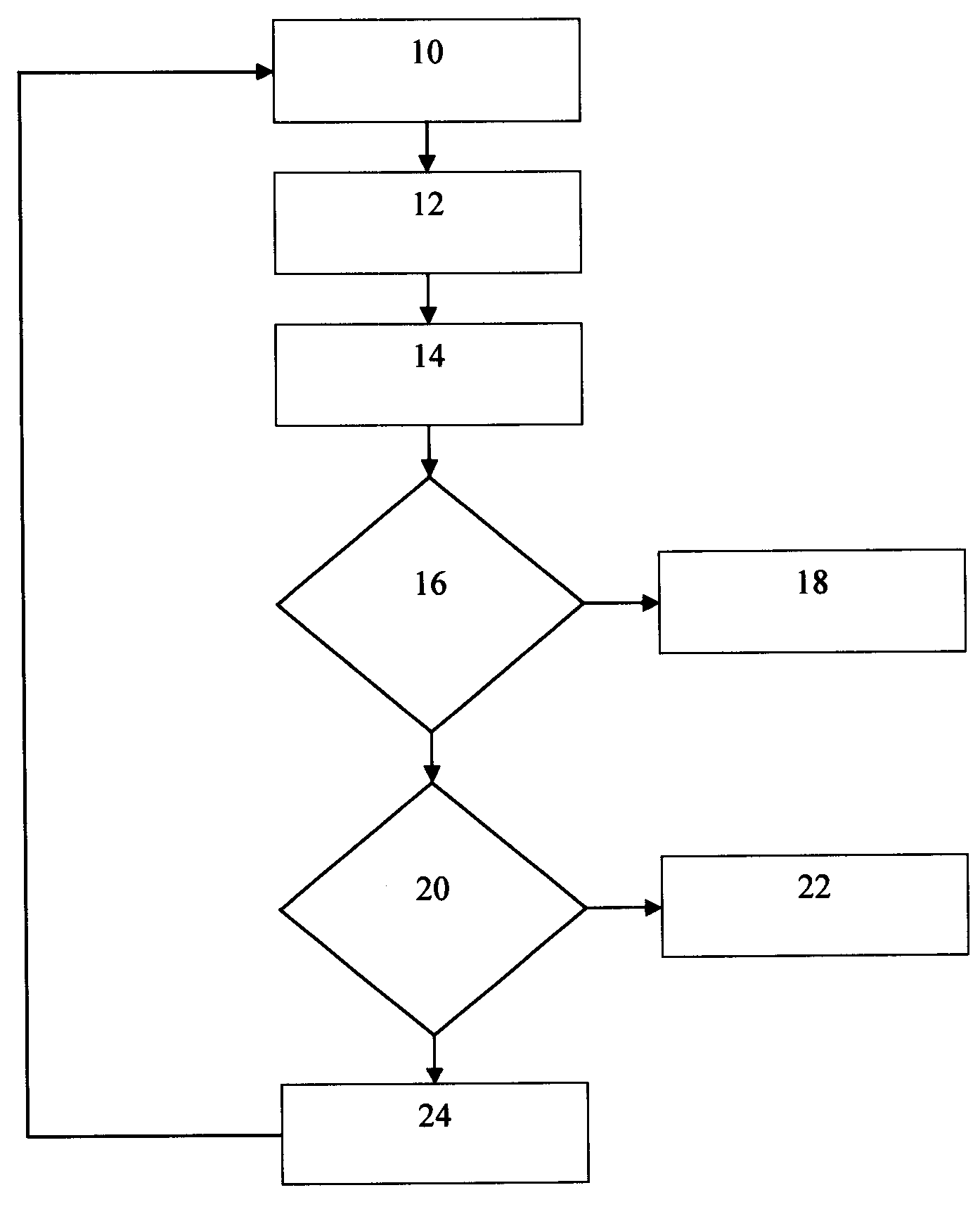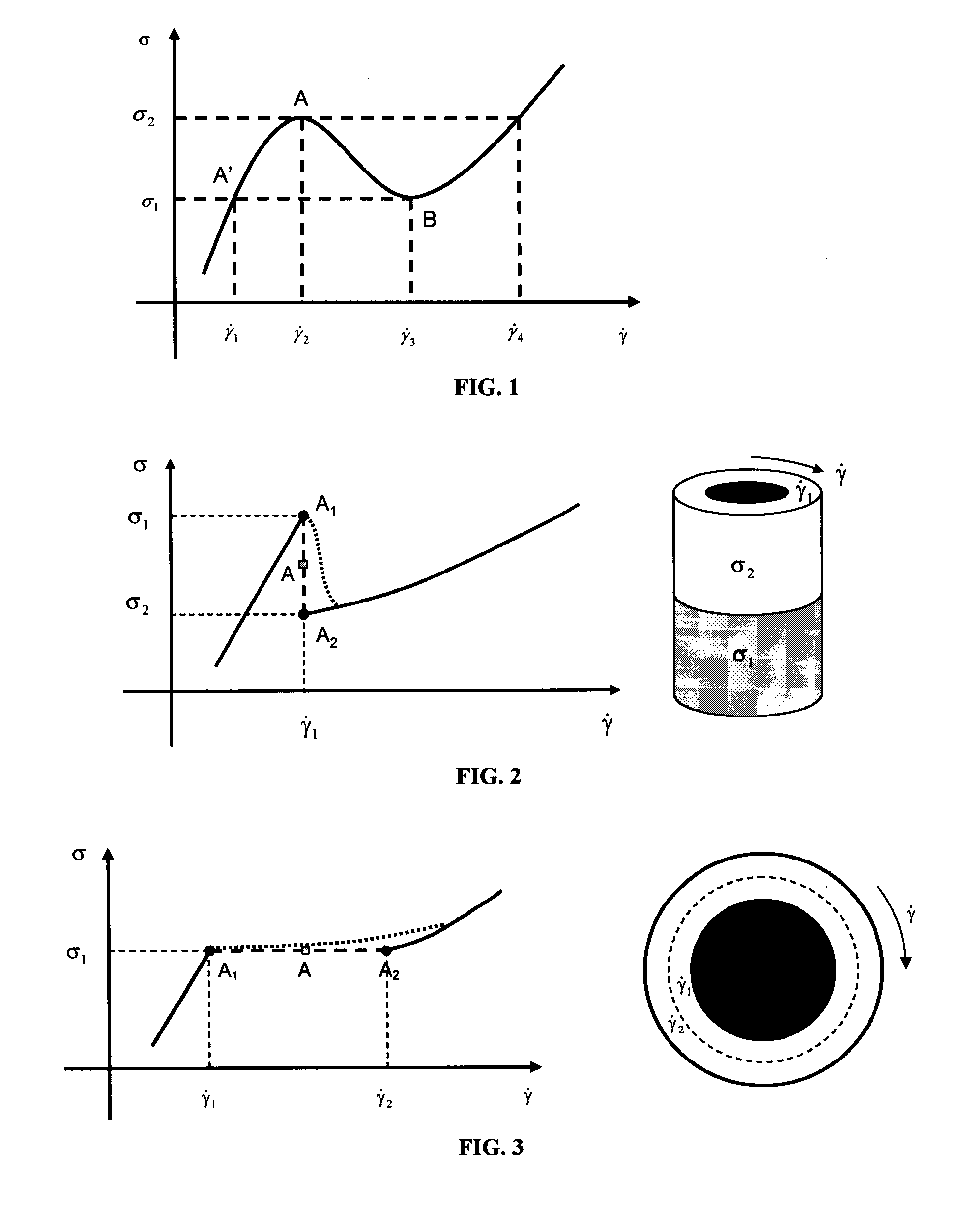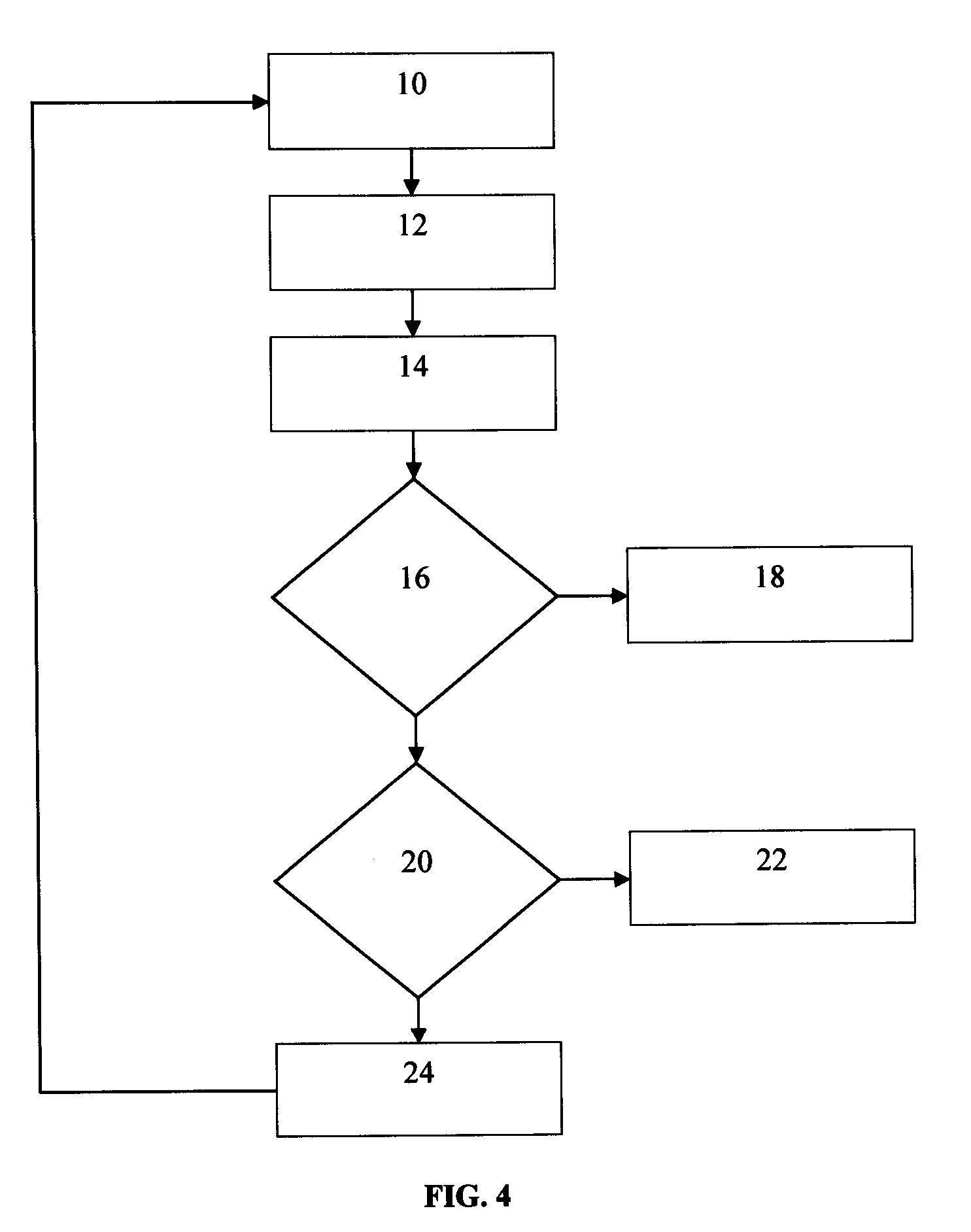Rheology Controlled Heterogeneous Particle Placement in Hydraulic Fracturing
a technology of hydraulic fracturing and heterogeneous particle, which is applied in the direction of fluid removal, survey, borehole/well accessories, etc., can solve the problems of low retained conductivity, no established method to reliably achieve a productive heterogeneous particle placement, and difficulty in the clean-up of fracturing fluid, so as to improve the production of formation fluid, improve the effect of clean-up and retention conductivity
- Summary
- Abstract
- Description
- Claims
- Application Information
AI Technical Summary
Benefits of technology
Problems solved by technology
Method used
Image
Examples
examples
[0061]FIG. 6 shows an example of the flow curve for an aqueous fluid including 3% by weight (Z)-13-docosenyl-N-N-bis-(2-hydroxyethyl) methyl ammonium chloride, based upon total fluid weight, and 35 pounds of sodium salicylate per 1000 gallons of fluid. These measurements were performed on a Bohlin CVO-120 rheometer using a C25 Couette geometry (cup diameter=27 mm, bob diameter=25 mm). Measurements were performed in both a controlled rate mode and a controlled stress mode. The rate softening characteristics were only captured in the controlled rate mode. FIG. 6 shows a flow curve exemplary of a fluid with non-monotonic behavior, wherein the solid circles denote the results obtained from stress-controlled tests in a Couette cell, and the other points on the flow curve are from rate-controlled tests. As shown in the flow curve of FIG. 6, with a fluid with rheology that shows non-monotonic behavior, the shear stress can decrease with increasing shear rate.
[0062]Experimental evidence was...
PUM
 Login to View More
Login to View More Abstract
Description
Claims
Application Information
 Login to View More
Login to View More - R&D
- Intellectual Property
- Life Sciences
- Materials
- Tech Scout
- Unparalleled Data Quality
- Higher Quality Content
- 60% Fewer Hallucinations
Browse by: Latest US Patents, China's latest patents, Technical Efficacy Thesaurus, Application Domain, Technology Topic, Popular Technical Reports.
© 2025 PatSnap. All rights reserved.Legal|Privacy policy|Modern Slavery Act Transparency Statement|Sitemap|About US| Contact US: help@patsnap.com



